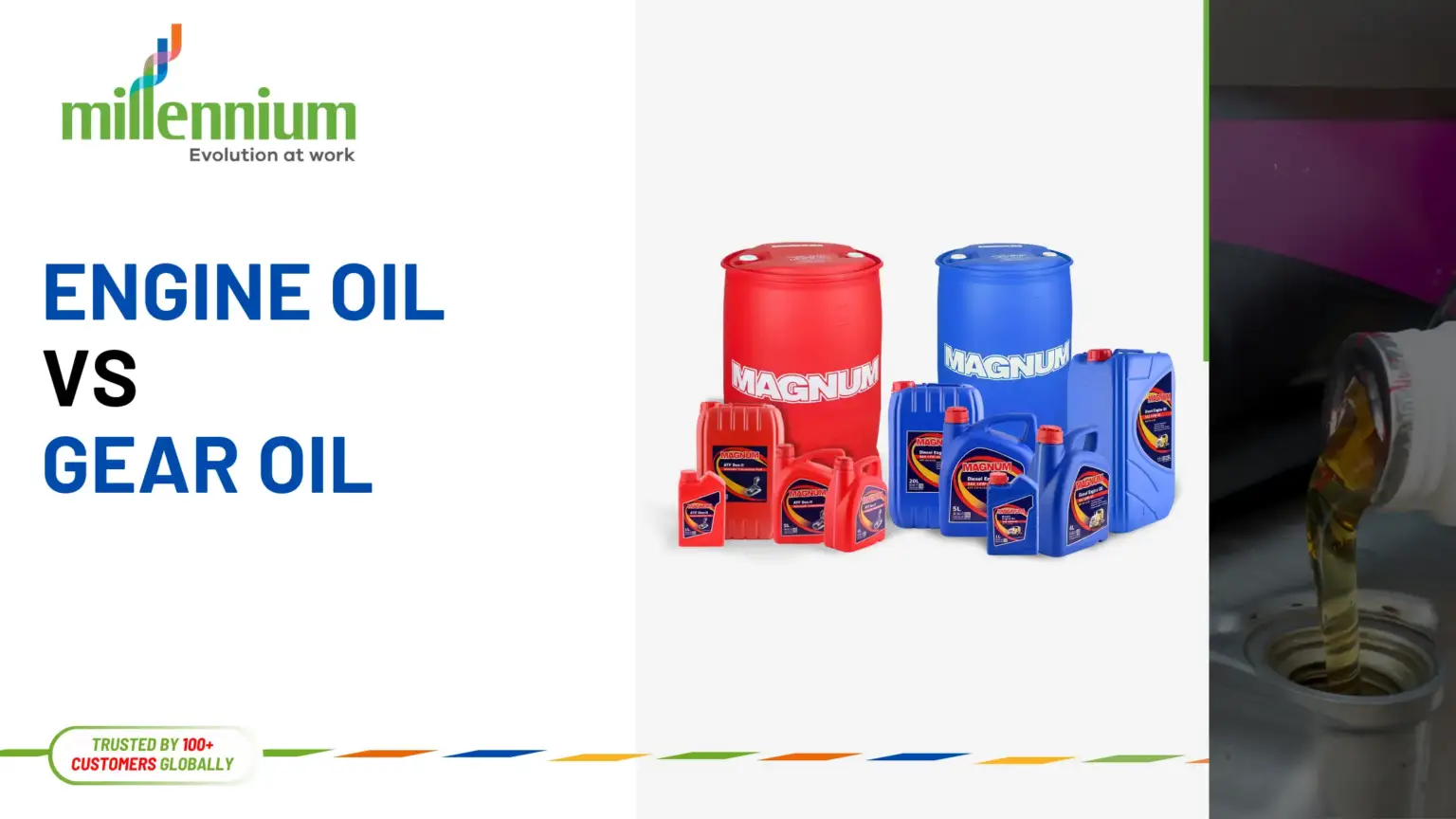
Lubrication is vital to the performance, efficiency, and longevity of mechanical systems. Two of the most commonly used lubricants in vehicles and machinery are engine oil and gear oil. While they might appear similar, these oils serve very different purposes, are formulated differently, and are used in distinct components. Understanding how they differ is crucial for proper maintenance and operation.
What is Engine Oil?
Engine oil is a specially formulated lubricant used primarily in internal combustion engines to ensure smooth functioning of engine components. Its job goes far beyond just reducing friction. As the engine runs, metal parts move rapidly and generate significant heat. Engine oil acts as a coolant, friction reducer, and cleaning agent all at once. It circulates through the engine, forming a protective film over parts such as pistons, camshafts, and crankshafts, minimizing wear and tear.
Modern engines rely on engine oil not just for lubrication but also to assist in fuel efficiency, emissions control, and engine responsiveness. Clean and properly chosen engine oil contributes directly to the health and performance of a vehicle.
Composition and Use in Engines
Engine oil is made from base oil (either mineral or synthetic) and a blend of performance-enhancing additives. These additives play a critical role in addressing the unique challenges within an engine. Common additives include:
- Detergents and dispersants to keep engine parts clean
- Anti-oxidants to prevent the oil from breaking down under heat
- Anti-wear agents to shield metal surfaces
- Viscosity modifiers to ensure consistent flow across temperature variations
In terms of use, engine oil is designed to operate in high-temperature environments while maintaining a delicate balance between lubrication and cleanliness. It must be changed regularly, as heat and contaminants gradually degrade its properties over time.
What is Gear Oil?
Gear oil is a lubricant specifically formulated for use in transmissions, gearboxes, differentials, and axle assemblies. These systems often deal with higher pressures and slower movement compared to engines, involving gear-to-gear contact under substantial load. Gear oil’s primary task is to cushion these gear interactions, reduce metal-to-metal contact, and ensure quiet, smooth power transmission.
Due to the nature of these systems, gear oils are thicker and typically include chemical compounds that withstand extreme pressure. In particular, they form protective layers that prevent surface damage and premature wear, especially during heavy-duty or shock-loading operations.
Composition and Use in Gear Systems
The formulation of gear oil differs significantly from engine oil. It is highly viscous, and often contains sulfur-phosphorus-based EP (extreme pressure) additives. These additives are activated under high pressure and form a sacrificial layer on gear surfaces, reducing the risk of pitting and scuffing. Other common additives include:
- Corrosion inhibitors to protect internal surfaces from moisture and contaminants
- Foam suppressants to maintain a stable lubricant film
- Friction modifiers for limited-slip differentials
Gear oil is typically used in enclosed gear systems where high load-bearing capacity is essential. It may also be required in marine and industrial applications where durability and resistance to shear are critical.
Key Differences Between Engine Oil and Gear Oil
While both oils serve as lubricants, the difference lies in their chemical makeup, viscosity, and functional focus.
- Viscosity and Flow: Gear oil is much thicker than engine oil to ensure it can stay between gear teeth under pressure. Engine oil is lighter, allowing it to flow freely and circulate rapidly throughout the engine.
- Additive Package: Engine oils prioritize cleanliness and temperature stability, whereas gear oils are centered around load-bearing capacity and metal protection.
- Thermal Environment: Engines reach higher sustained temperatures than most gear systems, so engine oils must withstand thermal degradation better.
- Function: Engine oil focuses on lubricating rapidly moving parts and managing combustion byproducts. Gear oil is dedicated to reducing friction in high-load, slower-moving gear systems.
- Designation Systems: Engine oils follow SAE viscosity grades like 5W-30 or 10W-40. Gear oils have a different grading system (e.g., SAE 75W-90 or API GL-4/GL-5), which can often cause confusion. Despite similar numbers, the actual viscosities and properties differ.
When to Use Engine Oil vs. Gear Oil
Choosing the correct lubricant depends entirely on the system in question. Engine oil should only be used in engines where its formulation matches the manufacturer’s specifications. Using gear oil in an engine can clog oil passages and lead to inadequate lubrication. On the other hand, applying engine oil to gearboxes or differentials will result in poor protection against gear wear and overheating under pressure.
Most modern vehicles have specific oils recommended for each part — engine, transmission, differential, etc. For example:
- Use engine oil for the vehicle’s engine to ensure optimal combustion performance and long-term durability.
- Use gear oil in manual transmissions or differentials, especially where high torque or load conditions are present.
Always consult the owner’s manual or manufacturer’s recommendations before applying any type of lubricant.
Conclusion
Though both engine oil and gear oil play essential roles in keeping machinery running smoothly, their applications, formulations, and properties are distinctly different. Misapplying either can result in damage, reduced performance, and increased maintenance costs. Understanding these differences helps users make informed decisions, extend equipment lifespan, and ensure optimal operation across all mechanical systems. Whether you’re a mechanic, vehicle owner, or maintenance engineer, choosing the right oil for the right job is a simple but powerful way to ensure long-term reliability.





